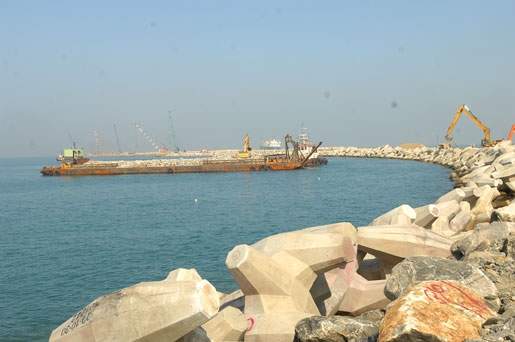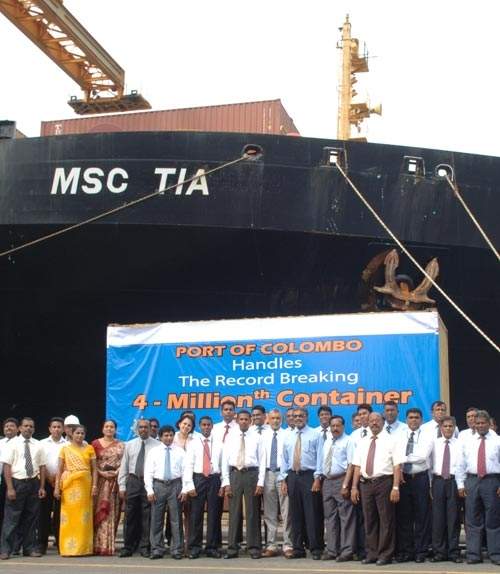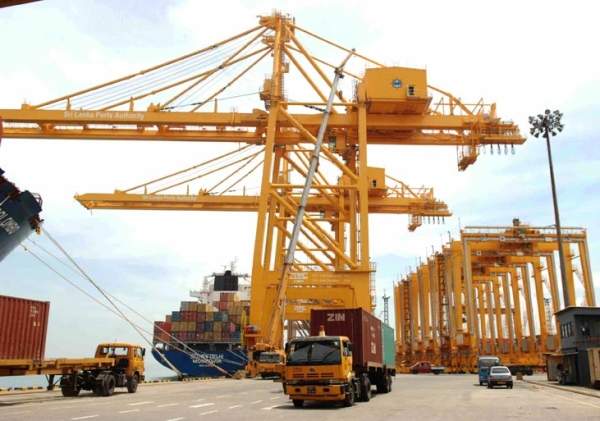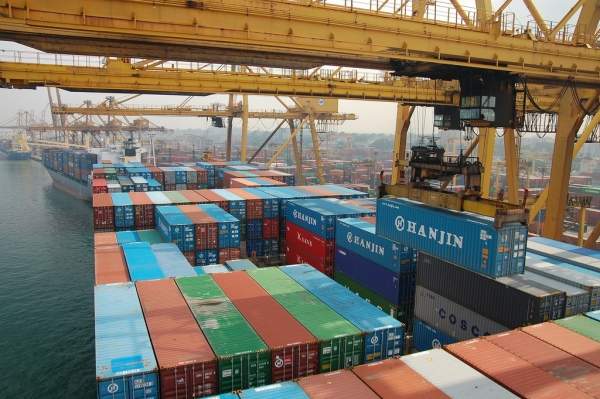The Port of Colombo, located on the south-western shores of the Kelani River in Colombo, is the largest and busiest port in Sri Lanka. Being located in the Indian Ocean, the port serves as an important terminal in Asia and handles most of Sri Lanka’s foreign trade.
It is also used as a naval base by the Sri Lankan Navy Western Fleet. The port features one of the biggest artificial harbours in the world. Annual cargo tonnage of the port is 30.9 million tons.
It is believed that Chinese, Indian and Persian merchants, who came to the country to trade famous spices, were among the first users of the port. The port was first controlled by the Portuguese and then by the Dutch.
The port went into the control of the British in 1796 and consequently witnessed upgrades and conversion into a sheltered harbour.
The port is administered and operated by Sri Lanka Ports Authority (SLPA), which was established in 1979 by an Act of Parliament.
Sri Lanka’s Port of Colombo design features
The Port of Colombo has a total land area of 1,200 acres and features three container terminals, namely the Jaya Container Terminal (JCT), South Asia Gateway Terminal (SAGT) and Unity Container Terminal (UCT).
The JCT, which is located at the Main Channel and North Channel entrances, covers 130ha of land area and 70ha of lake water area. The terminal has 1,292m of quay wall and alongside depths between 12 to 15m. It can stack a total of 44,120TEUs of cargo.
The SAGT is spread over 20ha and is served by 940m of berths with alongside depths of 15m. Total stacking capacity of the terminal is 1,620TEUs.
Dredged depth of the UCT varies from 9 to 11m. The container terminal is spread over 1.53ha and can stack up to 8,000TEUs of cargo. Total length of its quay wall is 590m.
Port of Colombo construction
The Port of Colombo was initially an open harbour but converted into a sheltered harbour in 1912. It witnessed great changes after the country gained its independence in 1948. The Queen Elizabeth Quay was inaugurated in 1954. Warehouses and 16 alongside berths with transit sheds were also constructed in the same year.
The port underwent a major transformation between 1980 and 2000. Two container terminals were built by the end of 1980s and three more were added in the early 1990s. The main channel was dredged and deepened to 15m in 1996, and the Oil Berth was opened one year later in 1997.
A new container terminal and a new container yard were added in 1998 and 1999 respectively. The SAGT became operational in 1999. Oluvil Lighthouse was commissioned and a new 50,000 DWT berth was constructed in the same year. The second phase of North Pier development commenced in 2000. The UCT and the Maritime Museum was opened in 2003.
In order to meet the increasing demand for services by the international shipping industry, the Government of Sri Lanka has launched Colombo Port Expansion Project (CPEP) to develop the south port area. The two phase project is estimated to cost $1.2bn. The project work was officially commenced in April 2008 and the first phase is projected to be completed by April 2012.
The first phase of expansion will principally involve construction of 6.83km of breakwater. The new harbour basin and navigational channel will be dredged and the crude oil pipeline will be re-routed during this phase. As of May 2011, the physical progress of the project was 65%.
Phase two will include terminal construction and provision of other related services.
The expansion project is being financed by the Asian Development Bank and SLPA. The main contractor of the project is Hyundai Engineering & Construction Company, while Scott Wilson is the consultant.
The construction of the South Container Terminal, which is part of the CPEP, will begin in the second half of 2011 and is expected to be completed in 2013. It will be undertaken by a consortium of China Merchant Holding and Aitken Spence on a Build-Operate-Transfer (BOT) basis.
Port facilities at the important Asian trade terminal
The port is currently served by three container terminals with seven container berths and four feeder berths. Bandaranaike Quay (BQ) and Prince Vijaya Quay (PVQ) are the additional facilities.
The JCT has four container berths and two feeder berths. Total container terminal area is 45.5ha and container freight station area is 15,000m2. The UCT offers two container berths and one multipurpose berth.
The bonded warehouse has a total area of 6,245m2, including 125m2 of cool room.
Ceylon Port Services and Mercantile Shipping Agencies are the two operators of Port of Colombo. The SAGT is operated by John Keells Holdings.
The JCT is equipped with 14 Panamax & Super Post Panamax quayside container cranes. There are 39 rubber tired container transfer cranes. The terminal is also equipped with four rail mounted gantry cranes to stack empty containers.
The SAGT is equipped with reach stackers, forklift handlers, terminal tractors and terminal trailers. The terminal’s gantry cranes include rubber tired gantry cranes and Post Panamax and Super Post Panamax cranes.
The UCT is served by three quayside container cranes and has 50 terminal tractors.







